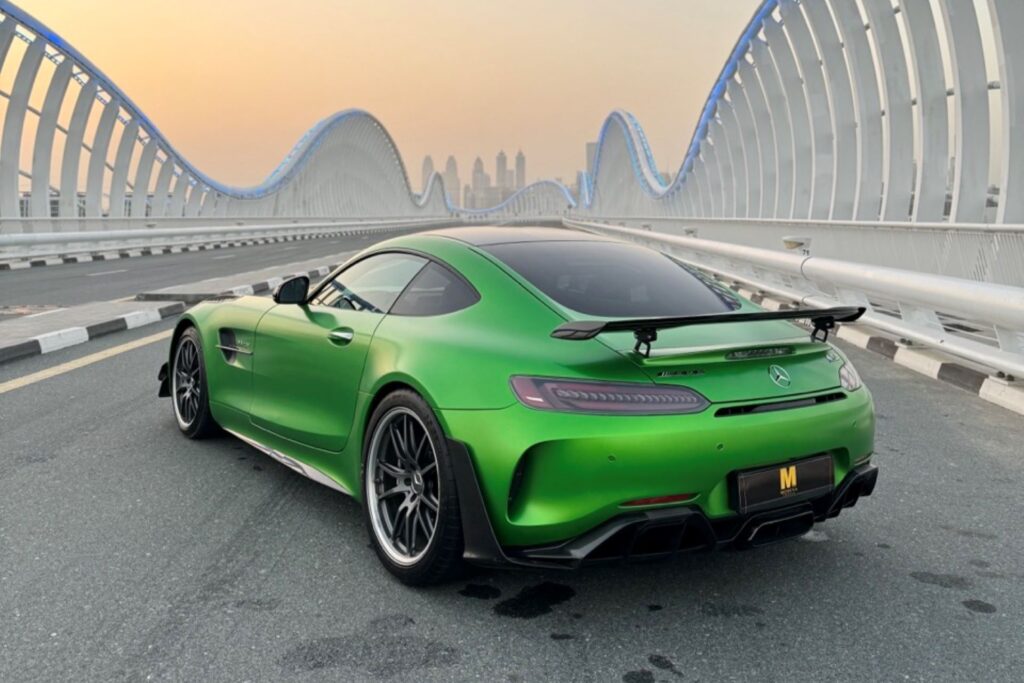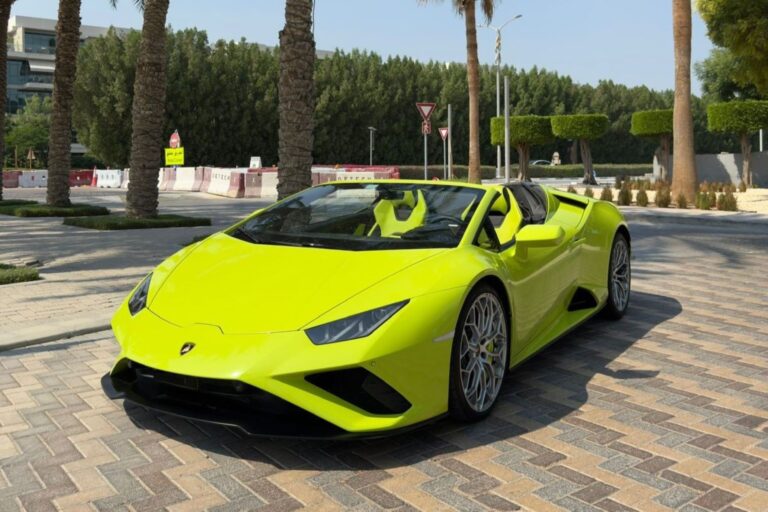Are you wondering how one of the most recognizable brands in the world came to be? It is a story of passion, competition, and engineering genius that changed the face of transportation. Discover the fascinating journey that three-wheeled vehicles took to become a symbol of luxury. This is the story of Mercedes-Benz, which will help you understand the phenomenon of the three-pointed star.

Two visionaries who never met
Imagine the paradox that lies at the heart of one of the world’s greatest automotive powers. Today, the name of this company is synonymous with unity and perfection, but its founding fathers operated completely independently. Karl Benz and Gottlieb Daimler, for it is they we are talking about, lived and worked just 100 kilometers apart. They were separated by the distance between Mannheim and Cannstatt, which was significant at the time, but they were united by a shared passion for machines. Although both are considered pioneers of the automotive industry, historians agree that these two brilliant engineers probably never shook hands. Their visions developed in parallel, fueling a technological race whose effects can be seen today on roads around the world. It was this fascinating rivalry, rather than cooperation, that gave rise to the legend.
The year 1886 – a moment that changed the world. Patent DRP 37435
It is important to note that the history of Mercedes-Benz did not begin with luxury limousines, but with noisy, smoke-belching prototypes. The key date is January 29, 1886. It was then that Benz registered his “gas-powered vehicle” with the Imperial Patent Office in Berlin. Patent No. DRP 37435 became the birth certificate of the car. However, the Patent-Motorwagen No. 1 did not resemble today’s cars. It was a three-wheeler that Karl designed from scratch as a coherent whole, integrating the chassis with the engine.
At the same time, in Cannstatt, Daimler was working on something else. His goal was to create a universal power source. Together with his brilliant partner, Wilhelm Maybach, they developed a compact high-speed engine, affectionately known as the “Standing Clock.” To test the unit, they mounted it in a wooden frame, creating the so-called Reitwagen – the first motorcycle in history. So you can clearly see that the creation of Mercedes is the result of the work of three, not two, outstanding minds, although Maybach’s name often remains unjustly in the shadows.

Bertha Benz – the first long journey in automotive history
A brilliant invention was not enough to convince a skeptical public. Proof was needed that the automobile was more than just an expensive toy. This is where Karl’s wife, Bertha Benz, entered the scene. In August 1888, without her husband’s knowledge, she took her two sons and set off on a journey from Mannheim to Pforzheim in an improved prototype. The distance was about 106 kilometers, which was a huge challenge in those days.
During this trip, Bertha had to show considerable ingenuity. She cleaned a clogged fuel line with a hat pin and repaired the ignition wire insulation with a garter. Her courageous act proved that Benz’s design was suitable for everyday use. She became the first person to make a long-distance journey by car, acting as the most important marketer in the company’s history. Thanks to her, the world understood that the era of horses was coming to an end.
Where did the name Mercedes come from? The story of Emil Jellinek
You’re probably wondering why the company isn’t simply called Daimler-Benz. The answer takes us to Nice and a certain demanding Austrian diplomat. Emil Jellinek, as he is called, was fascinated by Daimler vehicles, but considered them too tall and unstable. As an influential dealer, he forced the Cannstatt-based company to build a completely new model. It was to be lower, wider, and faster.
Jellinek set one condition: the vehicle would bear the name of his beloved daughter. That is how the name you know today came about. In 1901, the world saw the 35 HP model – the first modern car that outclassed the competition. The success was so great that in 1902 the name was registered as a trademark. And what about the symbol? The famous three-pointed star originally appeared on a postcard sent by Gottlieb to his wife. It was meant to symbolize the dominance of Daimler engines in three environments: on land, in water, and in the air.

The 1926 merger – the birth of Daimler-Benz AG
After World War I, the German economy was in ruins. Rampant inflation and sales difficulties meant that even the biggest players had to fight for survival. Former rivals realized that further competition could lead to bankruptcy. In 1924, Benz & Cie. and Daimler-Motoren-Gesellschaft entered into a partnership agreement.
Two years later, in 1926, the process was finalized. Daimler-Benz AG was formed, and the brands were merged into one. It was then that a new logo was designed. The Daimler star was surrounded by Benz’s laurel wreath, creating one of the most recognizable trademarks in the world. This decision not only allowed the company to survive the crisis, but also to dominate the luxury and commercial vehicle market for decades to come.
Silver Arrows and technological dominance
The 1930s were a period in which the history of the Mercedes brand became inextricably linked with sport. Legend has it that during a race in 1934, the W25 racing car weighed one kilogram too much, exceeding the regulatory limit of 750 kg. The mechanics came up with the idea of sanding down the white paint to bare metal. The exposed aluminum glistened in the sun, and the vehicles earned the nickname “silver arrows”.
Dominance on the racetrack went hand in hand with innovation on public roads. In 1936, the company unveiled the 260 D model. It was the first production passenger car equipped with a diesel engine. This solution, initially associated only with trucks and taxis, eventually became standard in the automotive industry, offering drivers unprecedented fuel economy and engine durability.
Rebuilding and revolutionizing safety – engineers more important than stylists
After World War II, the company had to rise from the ashes, but it was then that engineers from Stuttgart redefined the concept of passenger protection. Béla Barényi became a key figure in this process. He developed the concept of a crumple zone that absorbs impact energy, protecting the rigid passenger compartment.
You should be aware that many of the systems you have in your car today made their debut in models with a star on the hood. Take a look at this impressive list of innovations:
- 1978: Premiere of the ABS system in the S-Class (W116), which prevents the wheels from locking during braking.
- 1981: Introduction of the driver’s airbag and seat belt pretensioners.
- 1995: The ESP (Electronic Stability Program) system makes its debut, saving the lives of thousands of drivers.
These groundbreaking safety systems in Mercedes cars have earned the brand a reputation not only as a manufacturer of luxury cars, but above all as a manufacturer of safe cars.
Icons that built a legend – from the “Gullwing” to the “Barrel”
The manufacturer’s portfolio includes models that have forever changed the automotive landscape. In 1954, the 300 SL “Gullwing” made its debut. Its upward-opening doors were not just a stylistic feature, but a necessity resulting from the use of a high, spacious tubular frame. To this day, it remains one of the most sought-after collector’s cars.
In the 1970s and 1980s the W123 model hit the roads. This car became synonymous with indestructibility. It was not uncommon for these cars to cover a million kilometers without an engine overhaul, building a legendary reputation for the durability of German engineering. Its successor, the W124, proved to be equally iconic, setting the quality standards for the premium class for decades to come.
Not just limousines – the history of Mercedes trucks
When talking about this brand, you cannot forget about heavy transport. As early as 1896, Gottlieb Daimler presented the world’s first truck. It looked like a horse-drawn carriage without a drawbar, had a 4 horsepower engine and a load capacity of 1.5 tons. Over the next century, engineers perfected these designs, creating powerful work tools.
The modern Actros series is a technological masterpiece that sets trends in international transport. These trucks were the first to abandon traditional mirrors in favor of the MirrorCam camera system. Daimler Truck is now one of the largest commercial vehicle manufacturers in the world, and its products drive the economies of many countries, transporting goods on every continent.
Expanding the family: AMG, Maybach, and Smart
Over the years, the company has evolved, creating sub-brands for different customer groups. AMG started out as a small workshop run by two former Daimler engineers, Hans Werner Aufrecht and Erhard Melcher. Their passion for tuning led to the company becoming an official part of the group in 1999, offering the ultimate in sporting thrills.
The reactivation of the Maybach brand, on the other hand, was an attempt to enter the ultra-luxury limousine market, competing with Rolls-Royce. Although the 57 and 62 models were not initially successful on the market, Mercedes-Maybach is now the pinnacle of the S-Class and GLS range. It is also worth mentioning the short and turbulent “marriage” with the American Chrysler (DaimlerChrysler) at the turn of the century, which ultimately ended in divorce and a return to German roots.
The present and the future – The era of electrification (EQ)
You are now facing another revolution. The brand is intensively developing the EQ model family, aiming for the complete electrification of its fleet. A significant structural change was the split that took place at the end of 2021. The giant split into two independent listed entities: Mercedes-Benz Group (passenger cars and vans) and Daimler Truck (trucks and buses). This move is intended to allow both companies to respond more quickly to changing market needs and the challenges of the digital age.
What keeps the star shining?
When you learn about its history, you realize that the Stuttgart-based company’s success is no accident. It is the result of the genius of its founders, the courage of people like Bertha Benz, and the relentless pursuit of engineering perfection. From the first three-wheeler, through the armored “Barrels,” to futuristic electric cars – each decade brought innovations. The advertising slogan “The Best or Nothing” is not just an empty slogan here. It is a philosophy that has kept the three-pointed star the brightest star in the automotive firmament for over a hundred years.
Want to see how Mercedes models perform? Choose Modena car rental in Dubai! Our offer includes Mercedes G63, GTR PRO, and many more!




